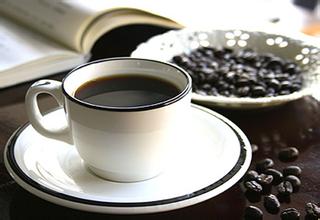A brief introduction to the description of the flavor, taste and aroma characteristics of boutique coffee beans in Joy Manor, Nicaragua

In many countries, coffee production will be seriously affected for political reasons. Nicaraguan coffee industry is no exception. The 1979 revolution forced coffee planters to flee to Miami. A period of indecision followed, when the government considered whether to redistribute land, including many plantations, which led to a shortage of coffee and a decline in production, from more than 1 million bags in the early 1970s to less than 600000 bags in 1990. Now the Government has opened up the coffee industry and private owners have taken control of the market. The coffee is produced in Sinotega and New Segovia in Matagalpa. It has moderate acidity, delicious aroma and is very lovely.
Nicaragua is now one of the poor countries in Central America. Due to its poor economic foundation, the coffee industry is still relatively backward, while coffee farmers are in extreme poverty. Fortunately, Nicaraguan coffee has received some foreign aid funds to improve the quality of its coffee. The coffee produced in Nicaragua's Madagelba, Sinodega and Segovia is highly respected by coffee lovers all over the world. The coffee produced in Madaguelba, in particular, tastes very similar to Kenyan AA coffee.
The microclimate of the Panamanian highlands is the most important resource that makes Panamanian coffee unique. The most important resource that makes Panamanian coffee unique is its microclimate. The east-west environment of the Republic of Panama converges cold air over 6500 feet through the Central Mountains, creating a variety of microclimates in the Boquete and Volc á n-Candela regions, making it a major source of Panamanian coffee. These unique coffees are grown in nutritious and balanced land located in the Baru volcano region.
Elida Manor
[name]: Panama Elida Natural
[coffee country]: Panama
[coffee producing area]: Pocket
[coffee Manor]: Elida Manor
[planting altitude]: 3300 m
[baking degree]: shallow baking
[treatment]: washing
[coffee flavor]: milk chocolate, citrus, peach, grapefruit
Elida Manor is located in the Pokuit producing area of Chiriki Province, the western border province of Panama. The most famous landmark and tourist attraction of the province is the Baru volcano, which is 3300 meters above sea level. Balu volcano is one of the highest volcanoes in Central America, with a total area of about 14000 hectares. It can be divided into seven different microclimate zones according to the altitude. The volcano is inhabited by many rare plants, birds and mammals. The Pokuit region is located on the eastern side of Mount Baru, a valley of lava flowing through Panama, next to another well-known coffee producing area in Panama, the Vulcan Valley (Volcan Valley).
Pokuit has always been the most high-profile coffee producing area in Panama, and there are many famous estates in the region-such as Esmeralda, which is famous for the Geisha variety World War I, Hartman, Mama Cata, Kotowa and Santa Teresa, which are always victorious by Best of Panama. Alida Manor itself is also a heavyweight star manor in Pokuit-has won Best of Panama awards for the past five years in a row, second only to Jade Manor. Elida Manor has a total area of 65 hectares, more than half of which are located within the Baru Volcano National Park, 30 hectares of the estate are planted with coffee trees, and the remaining 35 hectares are virgin forests. Coffee is grown from 1670 to 1850 meters above sea level, making it one of the two highest coffee farms in Panama (the other estate with these elevations should be Carmen in the Vulcan Valley). At such a high altitude, the low temperature delayed the ripening of the coffee berries, about a month later than the normal ripening period, while the fertile volcanic soil provided sufficient nutrients for the coffee, coupled with the excellent microclimate brought by the Baru volcano, Elida Manor was able to achieve good results in cup test competitions. In addition to creating good coffee cultivation conditions, the Lamastus family, which runs the Elida estate, has also planted many different native tree species on the estate, not only to shade the coffee trees, but also to provide a friendly habitat for birds. In terms of fertilization, the Lamastus family uses artificial fertilization and a small amount of chemical fertilizers, but never uses pesticides and herbicides that are harmful to the environment. At present, in addition to Catuai, Typica and Bourbon, the Lamastus family also began to plant Geisha varieties a few years ago. In spite of this, Elida Manor used Catuai in all the batches of the Best of Panama competition, but achieved good results again and again, which shows the excellent quality and special flavor of coffee brought by its geographical environment and excellent postharvest treatment technology.
High-quality Nicaraguan coffee, grown in the north and middle of the country. Coffee is a pillar industry in Nicaragua, producing nearly 100,000 tons of coffee beans every year. Many people who have tasted Nicaraguan coffee usually think that it is no different from Salvadoran coffee or Honduran coffee. It is full-bodied, smooth and delicate, with a slightly bitter finish, like a faint taste in a wine.
Important Notice :
前街咖啡 FrontStreet Coffee has moved to new addredd:
FrontStreet Coffee Address: 315,Donghua East Road,GuangZhou
Tel:020 38364473
- Prev

Full-bodied and mellow coffee beans in Valenford Manor, Jamaica, grind degree and baking degree treatment method
There are three varieties of coffee in Jamaica: ⑴ Blue Mountain Coffee: grown above 666m above sea level, ⑵ Alpine Coffee: grown in Blue Mountain area below 666m, ⑶ Jamaican Coffee: coffee grown outside the Blue Mountain Mountains. The best blue mountain coffee beans are NO.1 peaberry, also known as pearl beans, which are carefully selected small round beans from products at an altitude of 2100 meters.
- Next

A brief introduction to the origin, development, history and culture of boutique coffee beans in Joy Manor, Nicaragua, with mediocre and gentle flavor.
Nicaragua is mainly divided into four major producing areas, namely, Bosnia and Herzegovina Sub-region (Segovias), Madaguelba / Sinodega region (Matagalpa/Jinotega), Polgo region (Boaco) and Pacific Coast region (Pacific).
Related
- Does Rose Summer choose Blue, Green or Red? Detailed explanation of Rose Summer Coffee plots and Classification in Panamanian Jade Manor
- What is the difference between the origin, producing area, processing plant, cooperative and manor of coffee beans?
- How fine does the espresso powder fit? how to grind the espresso?
- Sca coffee roasting degree color card coffee roasting degree 8 roasting color values what do you mean?
- The practice of lattes: how to make lattes at home
- Introduction to Indonesian Fine Coffee beans-- Java Coffee producing area of Indonesian Arabica Coffee
- How much will the flavor of light and medium roasted rose summer be expressed? What baking level is rose summer suitable for?
- Introduction to the characteristics of washing, sun-drying or wet-planing coffee commonly used in Mantenin, Indonesia
- Price characteristics of Arabica Coffee Bean Starbucks introduction to Manning Coffee Bean Taste producing area Variety Manor
- What is the authentic Yega flavor? What are the flavor characteristics of the really excellent Yejasuffi coffee beans?

